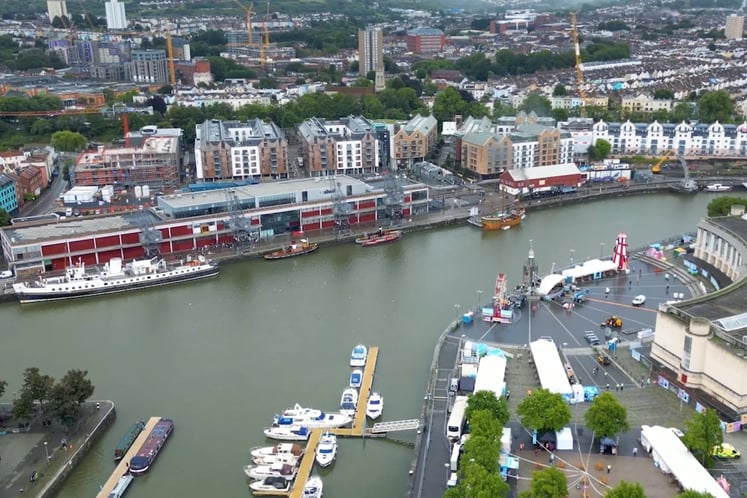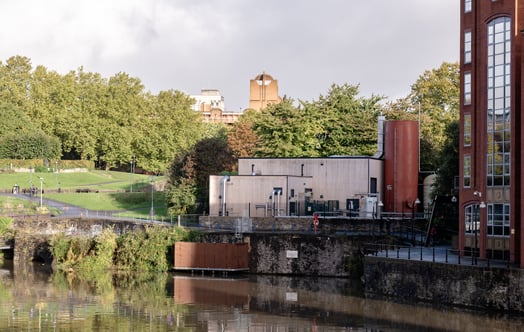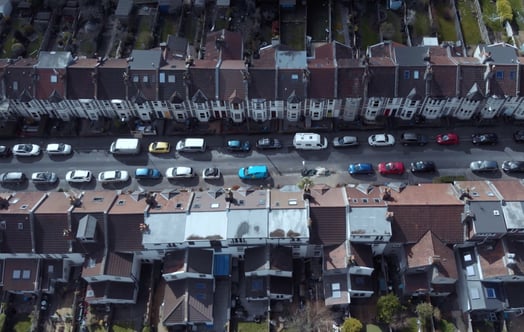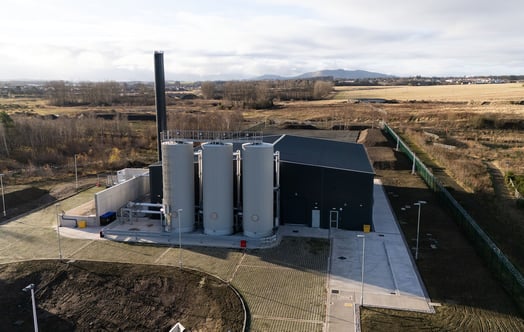Bringing Vattenfall's 2050 vision for the Bristol heat network to life through the Bristol City Leap partnership
Bristol City Leap is a transformational public-private partnership, with Vattenfall as the essential subcontractor for heat network delivery. The model has accelerated energy infrastructure upgrades across the city centre, delivering heat reliability and future scalability, supporting our vision to deliver low carbon heat to over half of all Bristolians living, working and learning in the city by 2050*.
How Bristol City Leap is accelerating heat decarbonisation with Vattenfall
As cities across the UK race to meet net zero targets, Bristol is leading the way through bold partnerships and infrastructure investment.
Bristol City Leap is a transformational public-private partnership between Bristol City Council and Ameresco, with Vattenfall as the essential subcontractor for heat network delivery.
This 20-year joint venture, the first of its kind in the UK, unlocks over £1 billion of investment in low carbon energy infrastructure, including the expansion of the Bristol heat network, as well as other energy projects such as solar PV, wind and energy efficiency upgrades.
Bristol City Council aims to be a carbon neutral city, creating a better environment for Bristolians through warmer homes, cleaner air, improved health and wellbeing and access to new green jobs. To be carbon neutral, this requires rapid decarbonisation of the city’s infrastructure, particularly its heating systems, which are among the largest contributors to carbon emissions.
To accelerate this transition and support sustainable urban growth, Bristol City Council partnered with Vattenfall as part of Bristol City Leap. In 2023, we acquired Bristol Heat Networks Ltd - a company originally established by the Council to develop and operate local heat networks.
This move allowed for Bristol City Council’s initial investment to be recouped, whilst transferring construction and operational risk to Vattenfall. In doing this, this unlocked scalable, city-wide heat network growth.
Delivering transformation and exercising leadership in climate action
Our partnership with Bristol City Council’s is rooted in a bold climate ambition: to lead by example in tackling the climate emergency through decisive action on heat decarbonisation.
By 2030, the Bristol heat network aims to serve the equivalent of 12,000 homes and develop new permanent low carbon energy centres such as air source and water source heat pumps, as well as recovered heat from places like the new Temple Quarter Enterprise Campus.
The Council brought us on board not only for our technical expertise but also for our ability to deliver large-scale infrastructure with strong governance, economic value, and energy resilience. The Bristol heat network 2050 vision is a natural extension of the partnership’s commitment, and projects the continued benefits of investment into energy infrastructure to support inclusive growth and community wellbeing.
Partnering with Vattenfall and Ameresco through Bristol City Leap has enabled us to accelerate the delivery of low carbon heat across our city, while ensuring strong governance and long-term value for our communities. Vattenfall’s expertise and investment have transformed our heat network into a scalable, resilient system that supports our climate goals, reduces carbon emissions, and delivers reliable heat to homes, schools and workplaces. This is a vital step toward our ambition to becoming a carbon neutral city and unlocks benefits that will be felt for generations.
The story so far on the Bristol heat network
Within two years, between January 2023 and June 2025, we have delivered:
- 17.45 GWh of low carbon heat
- 99% heat availability
- 15 connected buildings (taking the total of connected buildings to 35)
- Signed a further five buildings who have committed to decarbonising their heating system by connecting to the Bristol heat network
This progress demonstrates the reliability and impact of the partnership model, and the network’s scalability and commercial potential which will allow us to reach our vision of over half of all Bristolians living, working and learning in the City will be kept warm by the Bristol heat network by 2050*.
We are currently expanding the heat network in four network areas, with a fifth network expected to break ground at the end of the year. To support the network expansion, a planning application for a new permanent low carbon energy centre has been submitted to Bristol City Council, with further energy centres planned for development in 2026.
The creation of a joint venture, bridging public and private sectors, provides assurance of project quality, value for money and governance protections to local authorities.
How we work with local authorities to build and operate resilient energy systems
We partner with local authorities, property developers, housing associations and public sector institutions who are looking to move away from fossil fuels.
We specialise in large and city-scale low carbon heat networks, supporting new build and refurbishment projects in areas targeted for heat networks. While the UK government targets net zero by 2050 (Scotland by 2045), over 300 local authorities have declared a climate emergency, with nearly two-thirds aiming to be carbon neutral by 2030 - 20 years ahead of the national deadline.
We are currently working with local authorities in Bristol, London and Scotland to collaborate with heat sources, commercial organisations and communities to enable a city-scale transition from fossil-fuelled heating to low carbon alternatives.
Local authorities choose to partner with us because we bring an expert team, investment, vision and ambition. In Bristol, we’re seeing firsthand how an effective local planning policy can maximise the regulatory landscape to accelerate heat network at scale. With the implementation of zoning regulations expected in 2026, we can help cities to develop, grow and optimise local heat networks.
*The Bristol vision estimate is based on projected connections to the Bristol heat network by 2050, including homes, workplaces, schools and healthcare buildings. By combining forecasts of connected floorspace with typical household sizes and space use in offices and schools, we’ve estimated how many Bristolians could benefit from low carbon heat, assuming full uptake of connections.
To learn more about the procurement process for Bristol City Leap, watch this case study from Bristol City Council.
Video player requires marketing cookies.
To view this content please click here to allow marketing cookies.
This short film, produced by Bristol City Council, reveals more about the Bristol City Leap approach to city-wide decarbonisation.






